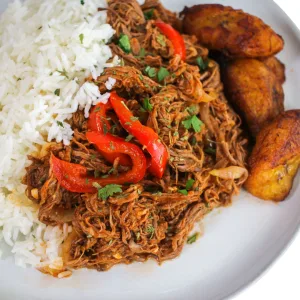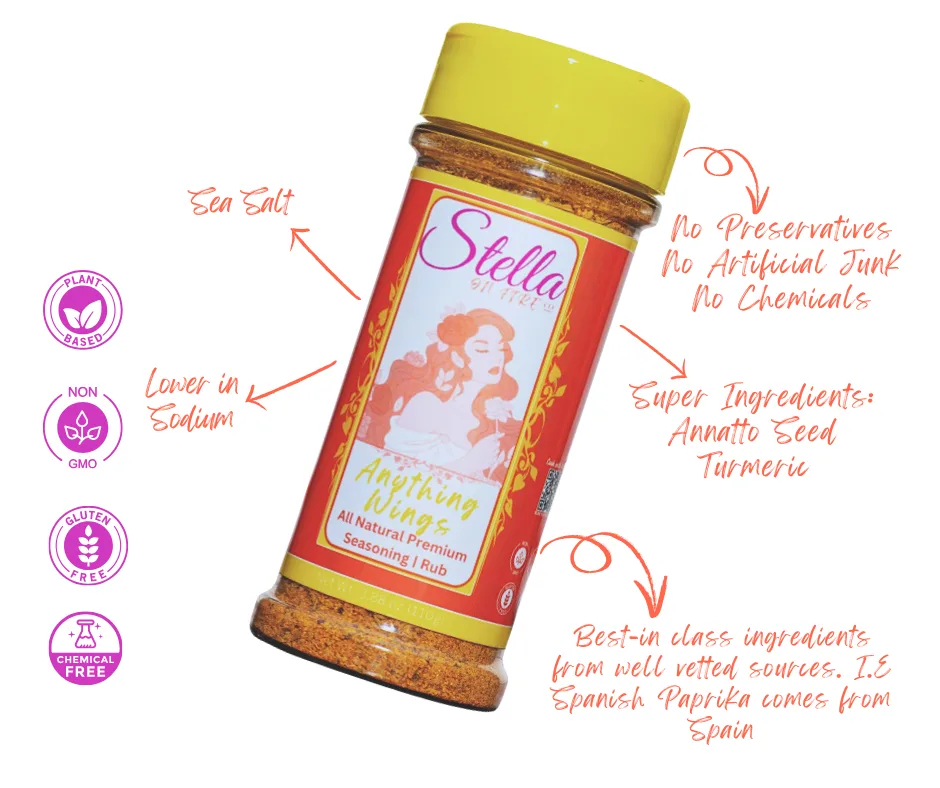Chimichurri is a versatile and vibrant sauce or condiment originating from South America, particularly Argentina and Uruguay. Known for its bold flavor and fresh ingredients, chimichurri is a staple in Latin American cuisine, often used as a marinade, dressing, or accompaniment to grilled meats.
In this guide, we’ll teach you everything about chimichurri, including its history, how to make it, and tips for pairing it with your favorite dishes.
What is Chimichurri Made Of?
Chimichurri is a raw, uncooked sauce typically made with fresh herbs, oil, vinegar, and spices. The key ingredients include:
- Parsley: The base herb, offering a fresh and slightly peppery flavor.
- Cilantro: adds freshness and flavor
- Garlic: Adds pungency and depth.
- Olive Oil: Creates a silky texture and helps carry the flavors.
- Red Wine Vinegar: Provides acidity and balance.
- Chili Flakes: For a hint of heat (optional).
- Salt and Pepper: To taste.
The sauce can be customized with additional ingredients like cilantro, oregano, or lemon juice, depending on regional preferences or personal taste.
The History of Chimichurri
Chimichurri has its roots in Argentina and Uruguay, where it is an essential part of the culinary culture. Traditionally served with asado (grilled meats), chimichurri embodies the region’s love for bold, natural flavors. While its exact origins are debated, the name “chimichurri” is believed to have been influenced by European settlers, blending indigenous and Spanish culinary traditions.
What Does Chimichurri Taste Like?
Chimichurri offers a vibrant and zesty flavor profile. The freshness of parsley and/or cilantro combines with the sharpness of garlic, the tang of vinegar, and the richness of olive oil, creating a harmonious balance. The optional chili flakes add a subtle kick, while salt and pepper enhance its savory notes.
Variations
While the classic chimichurri verde (green) is most common, other variations include:
- Rojo (Red): Incorporates red bell peppers or paprika for a deeper, smoky flavor.
- Cilantro : Replaces parsley with cilantro for a slightly sweeter, citrusy taste.
- Spicy: Adds more chili or fresh jalapeños for heat lovers.
This source is one that you can certainly add your own twist to. Don’t be afraid to experiment with different ingredients, oils, and seasonings. For instance, we enjoy adding GYPSY to give a nice little kick and more flavor. Gypsy enhances the flavors of all other ingredients.
I do recommend testing and experimenting with your mix and rations; you will find one you will enjoy.
How to Make it
Making chimichurri is simple and requires no cooking. Here’s a quick recipe:
Ingredients
- 1 cup fresh parsley, finely chopped
- 3–4 garlic cloves, minced
- 2 tablespoons red wine vinegar
- ½ cup olive oil
- 1 teaspoon red chili flakes (optional)
- Salt and pepper to taste
Instructions
- Finely chop parsley and garlic. Combine in a bowl.
- Stir in red wine vinegar, olive oil, chili flakes, salt, and pepper.
- Mix thoroughly and let the flavors meld for 15–20 minutes before serving.
We have our very own chimichurri recipe with our twist, make sure you check it out.
How to Use it
Chimichurri’s versatility makes it a must-have for a variety of dishes:
- As a Sauce: Serve over grilled meats, especially steak, chicken, or pork.
- As a Marinade: Use to tenderize and flavor meats before cooking.
- As a Dressing: Toss with roasted vegetables or salads for a zesty kick.
- As a Dip: Pair with crusty bread or empanadas for a flavorful snack.
Pairing Chimichurri with Foods
Chimichurri shines with grilled dishes, but its applications extend beyond traditional pairings. Here are some ideas:
- Grilled Flank Steak: Thinly sliced steak topped with chimichurri.
- Roasted Vegetables: Drizzle over roasted carrots, zucchini, or potatoes.
- Seafood: Use as a topping for grilled shrimp or salmon.
- Tacos: Add to beef or chicken tacos for an herbaceous twist.
- ANY Steak! – believe me, any.
FAQs
Q: Is chimichurri spicy?
A: The classic variation is not inherently spicy, but chili flakes or peppers can be added for heat.
Q: How long does it last?
A: Stored in an airtight container in the refrigerator, it stays fresh for up to 5–7 days.
Q: Can I freeze it?
A: Yes, chimichurri freezes well. Store it in ice cube trays for easy portioning and use within 3 months.
Conclusion
Chimichurri is more than just a sauce—it’s a celebration of fresh, bold flavors that elevate any dish. Whether you’re grilling steak or experimenting with roasted vegetables, it brings a vibrant touch to your meals. With Stella On Fire Co.’s seasonings, you can take your chimichurri recipes to the next level, ensuring every bite is packed with unforgettable flavor.






